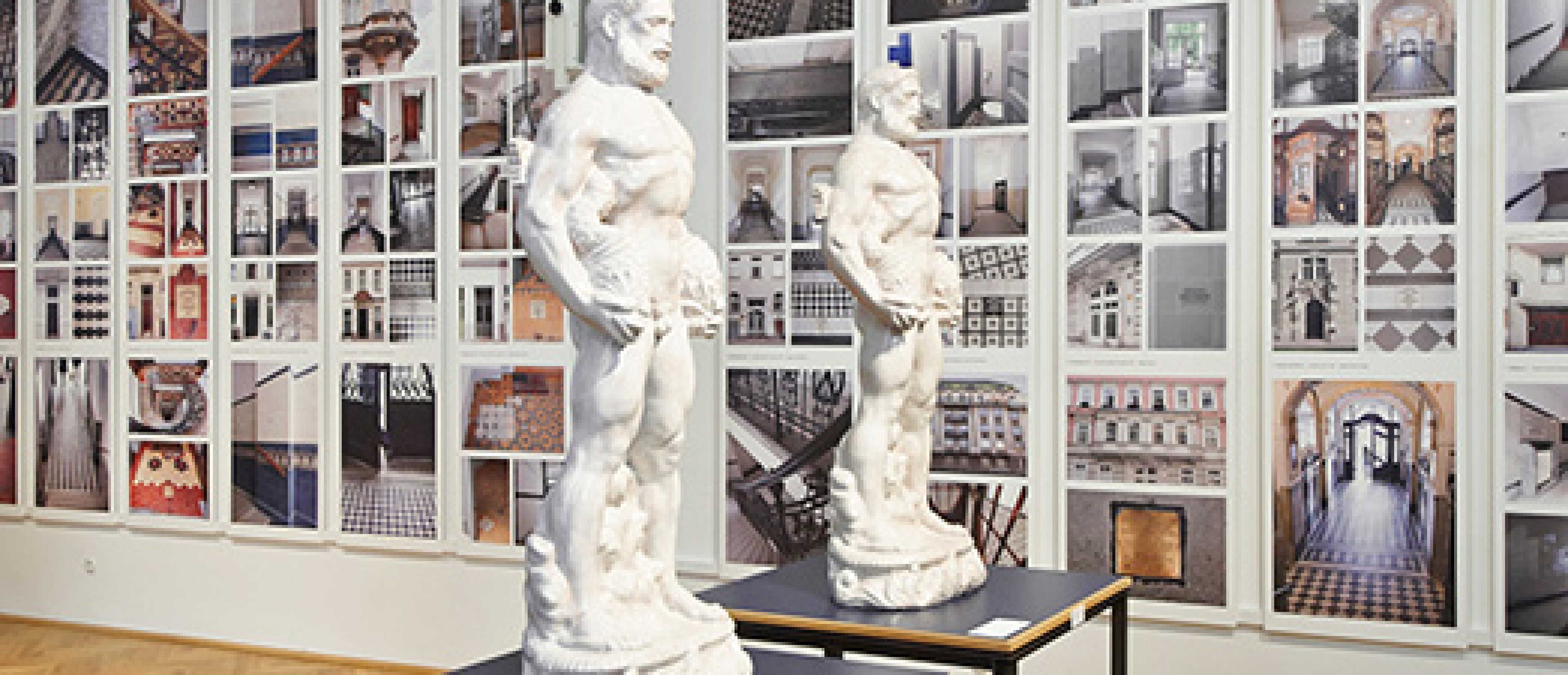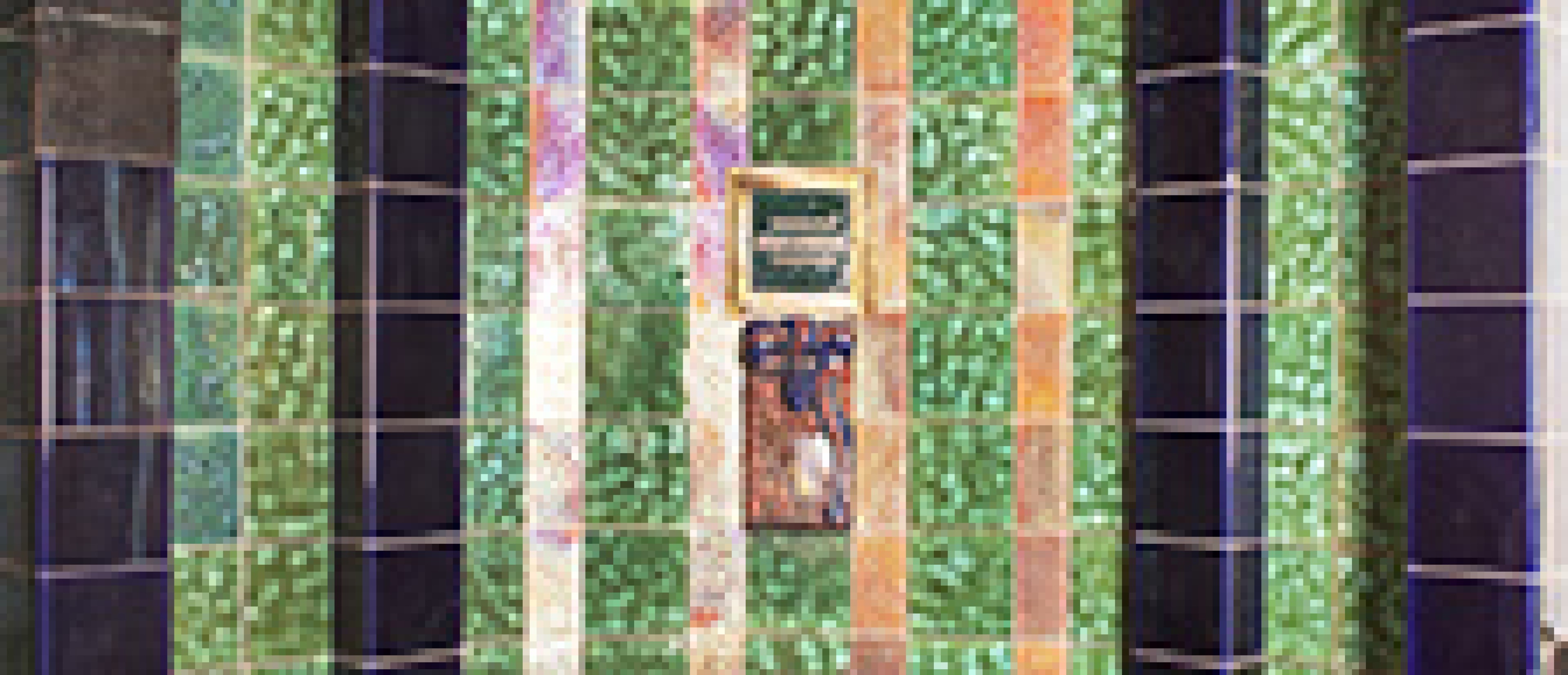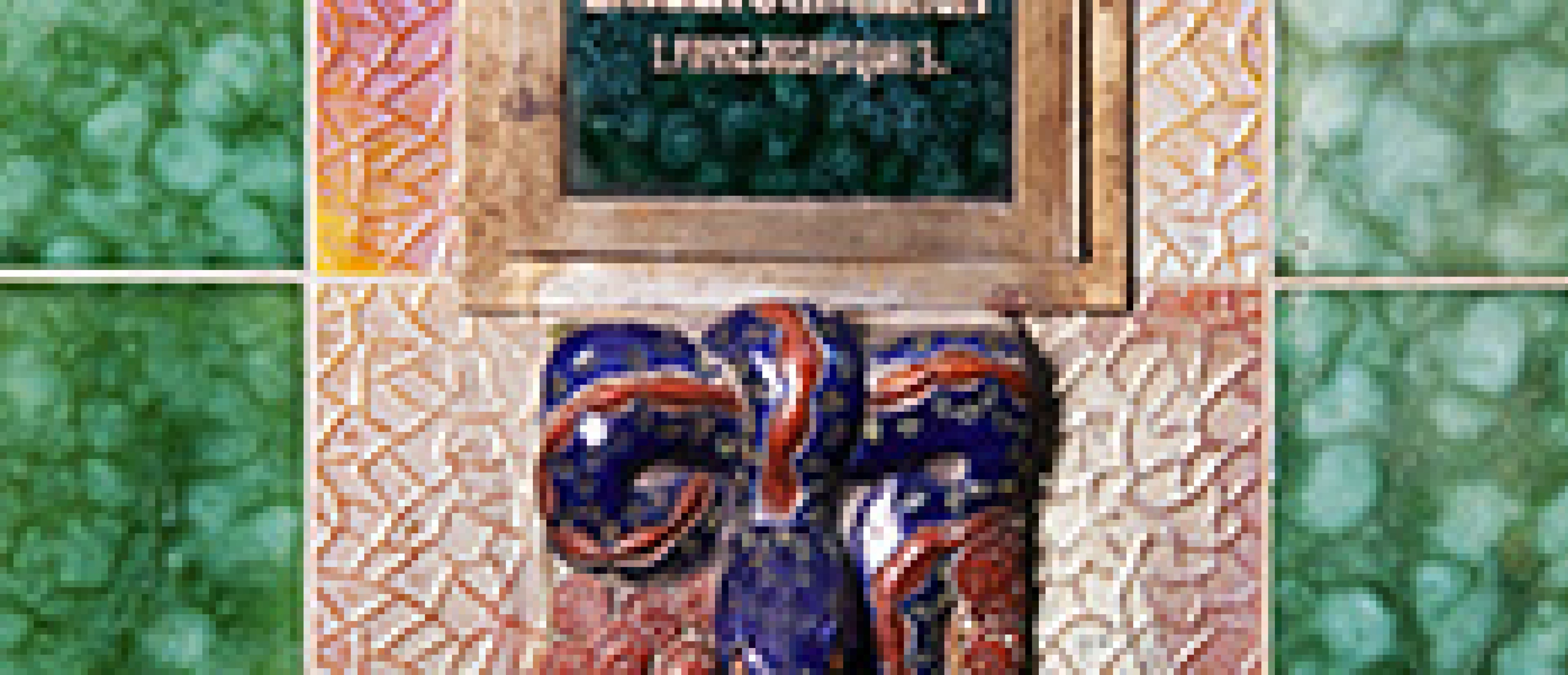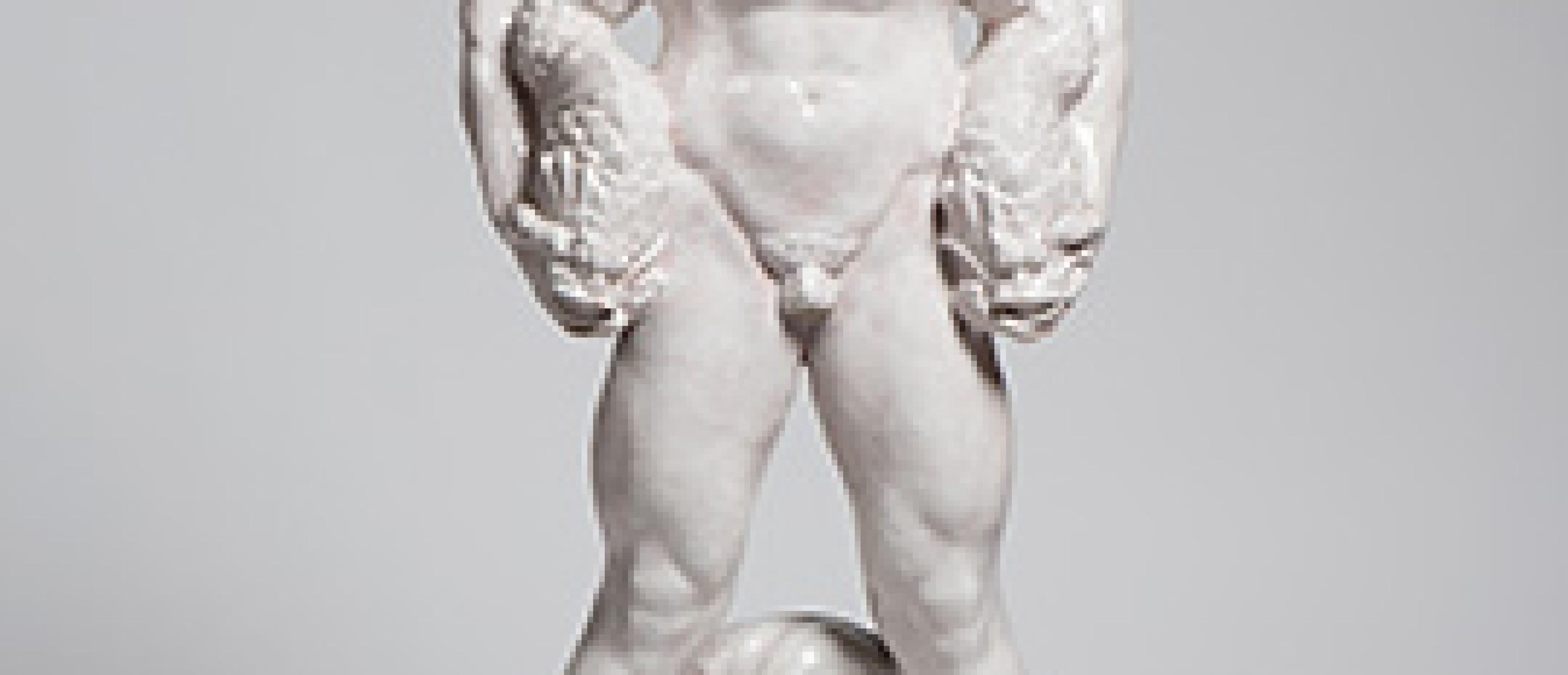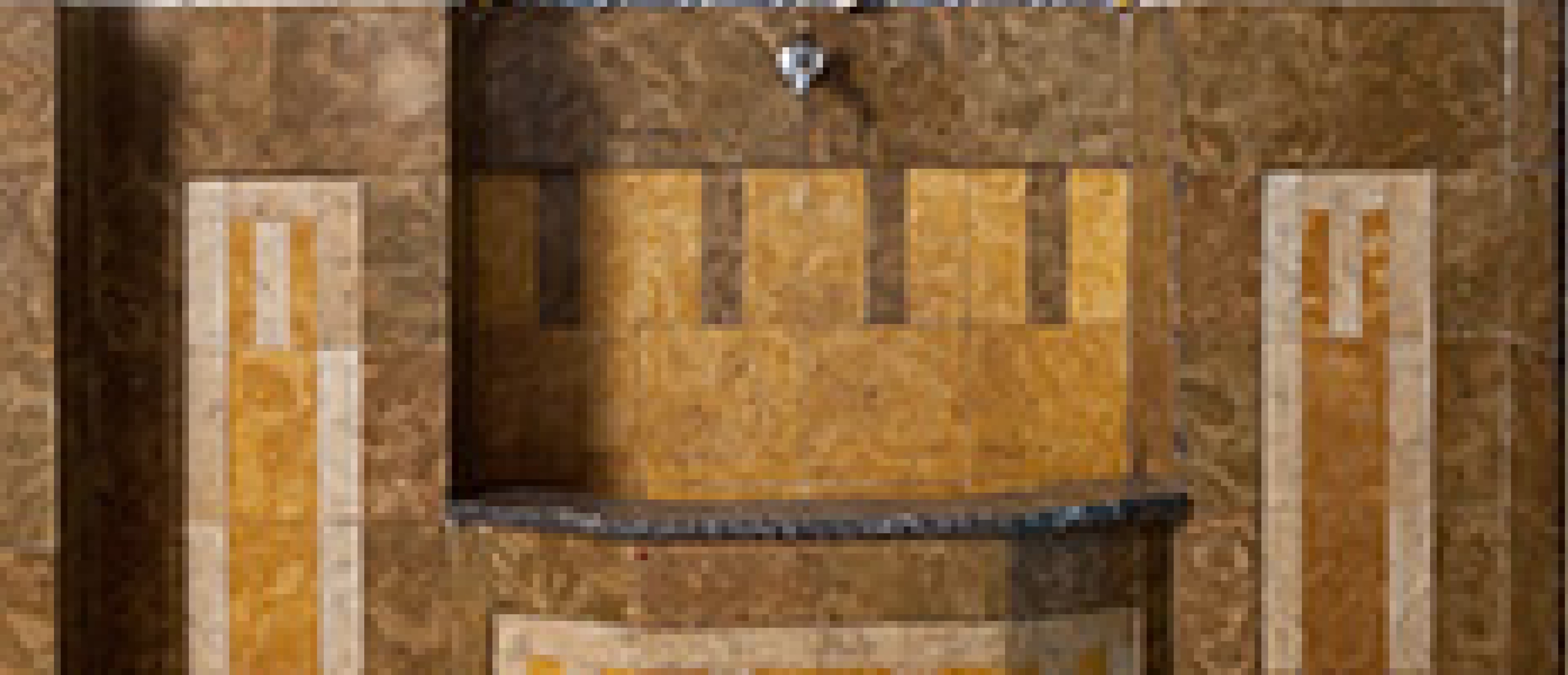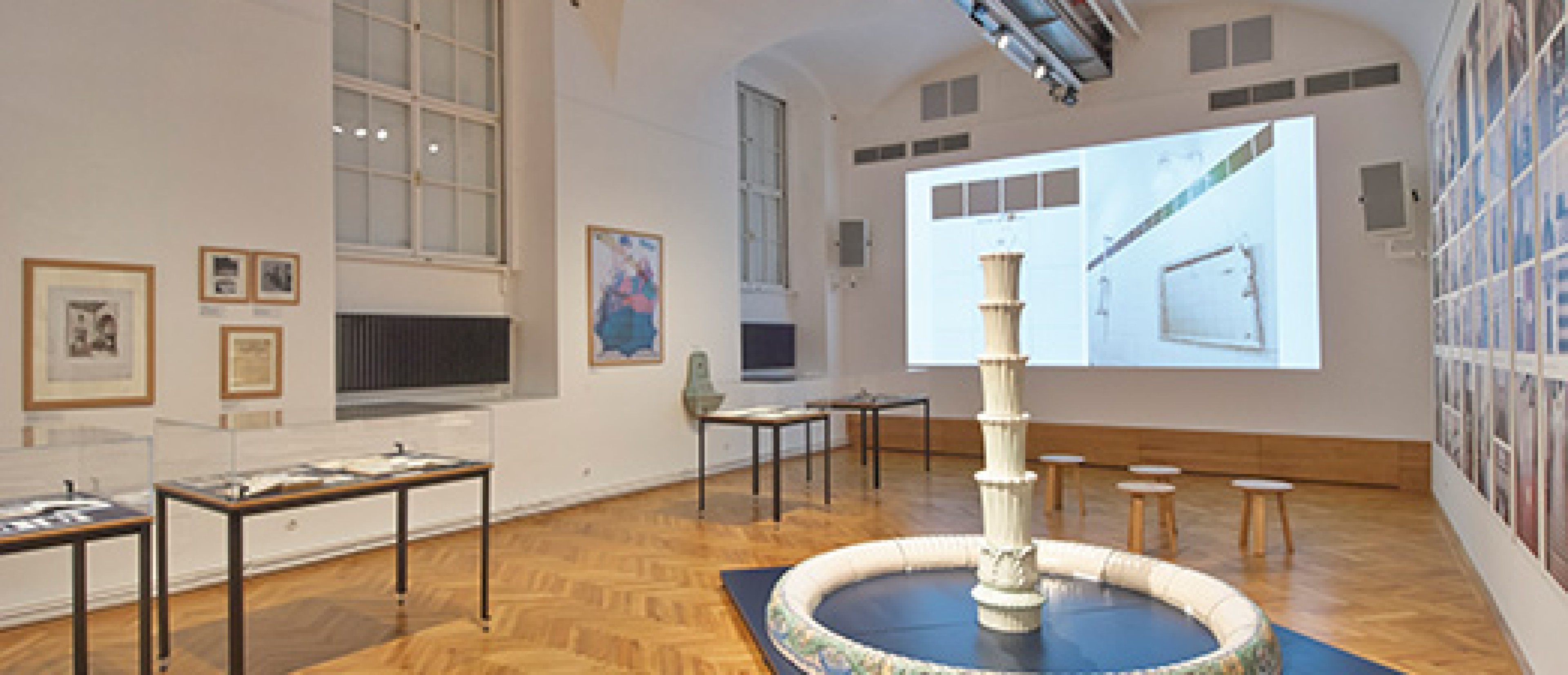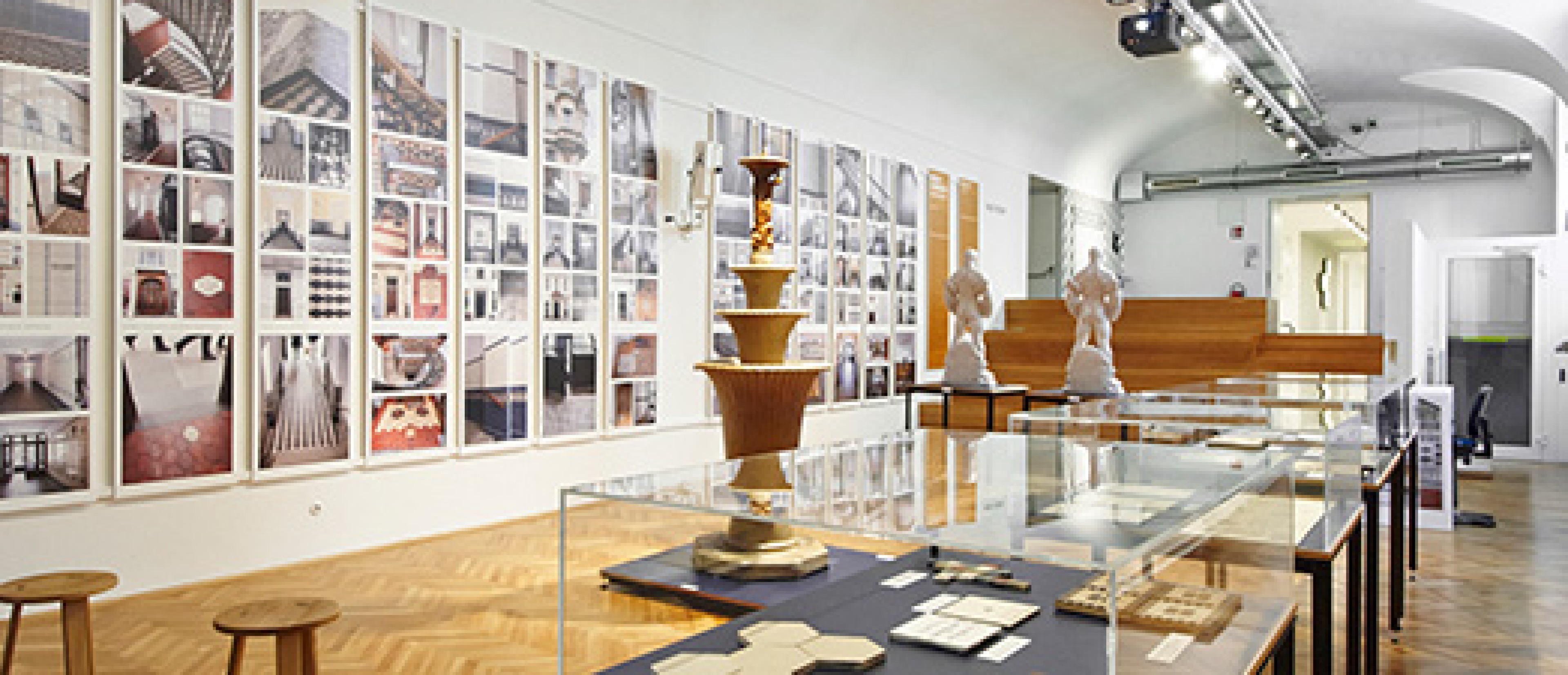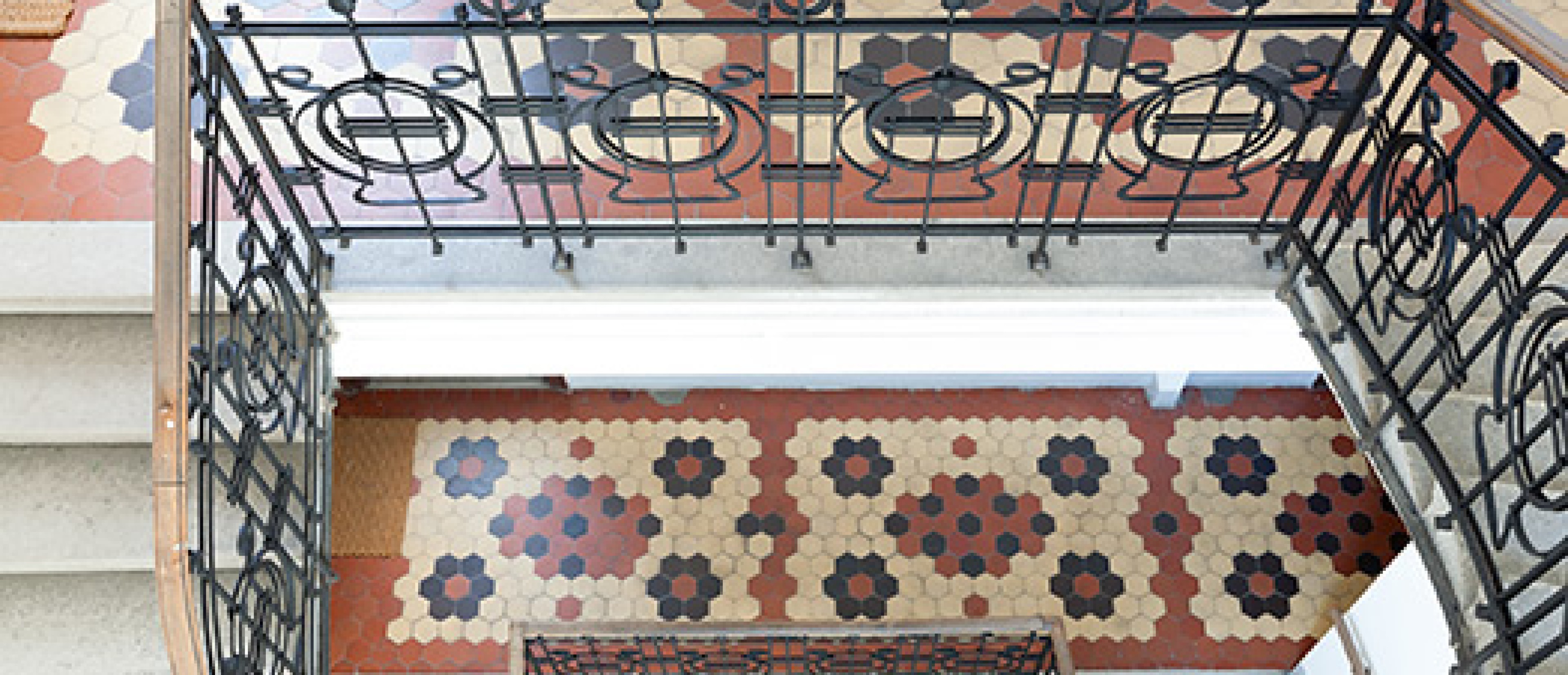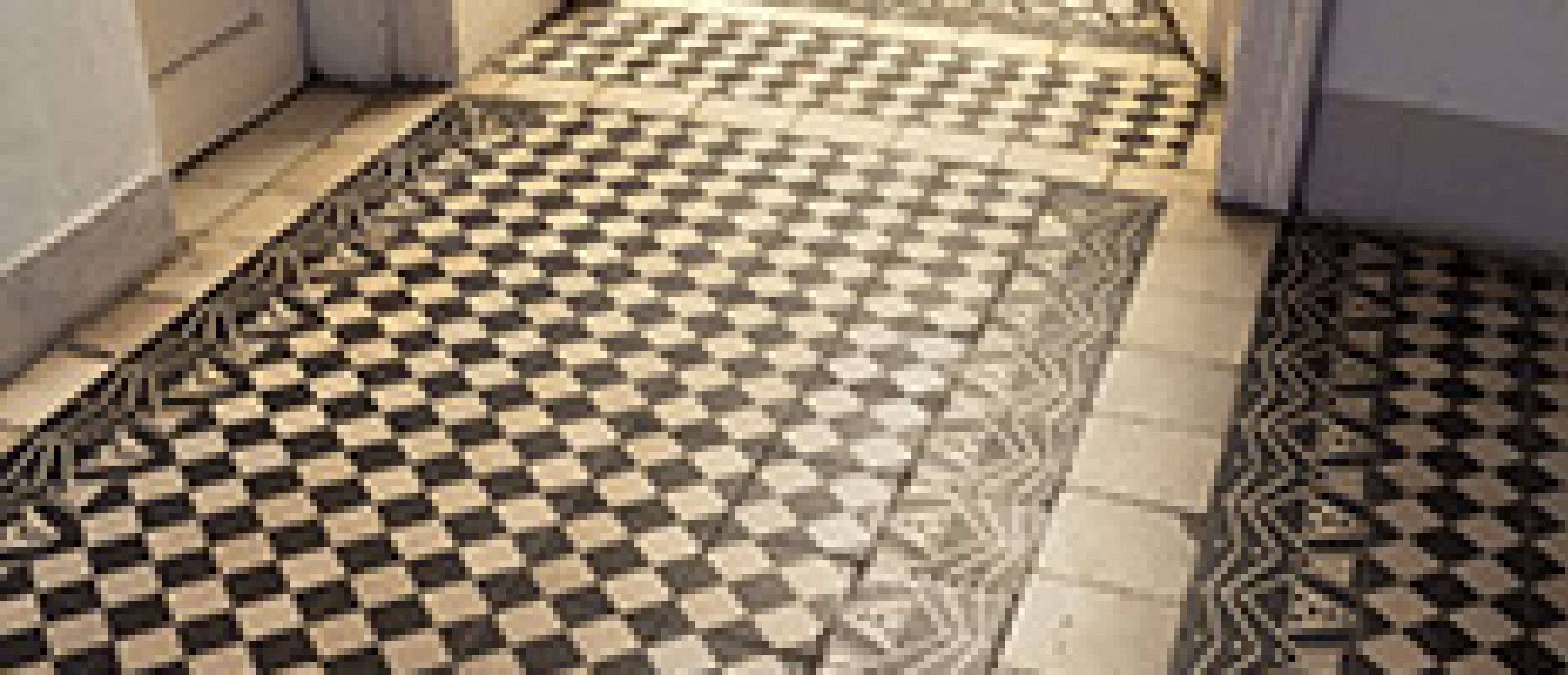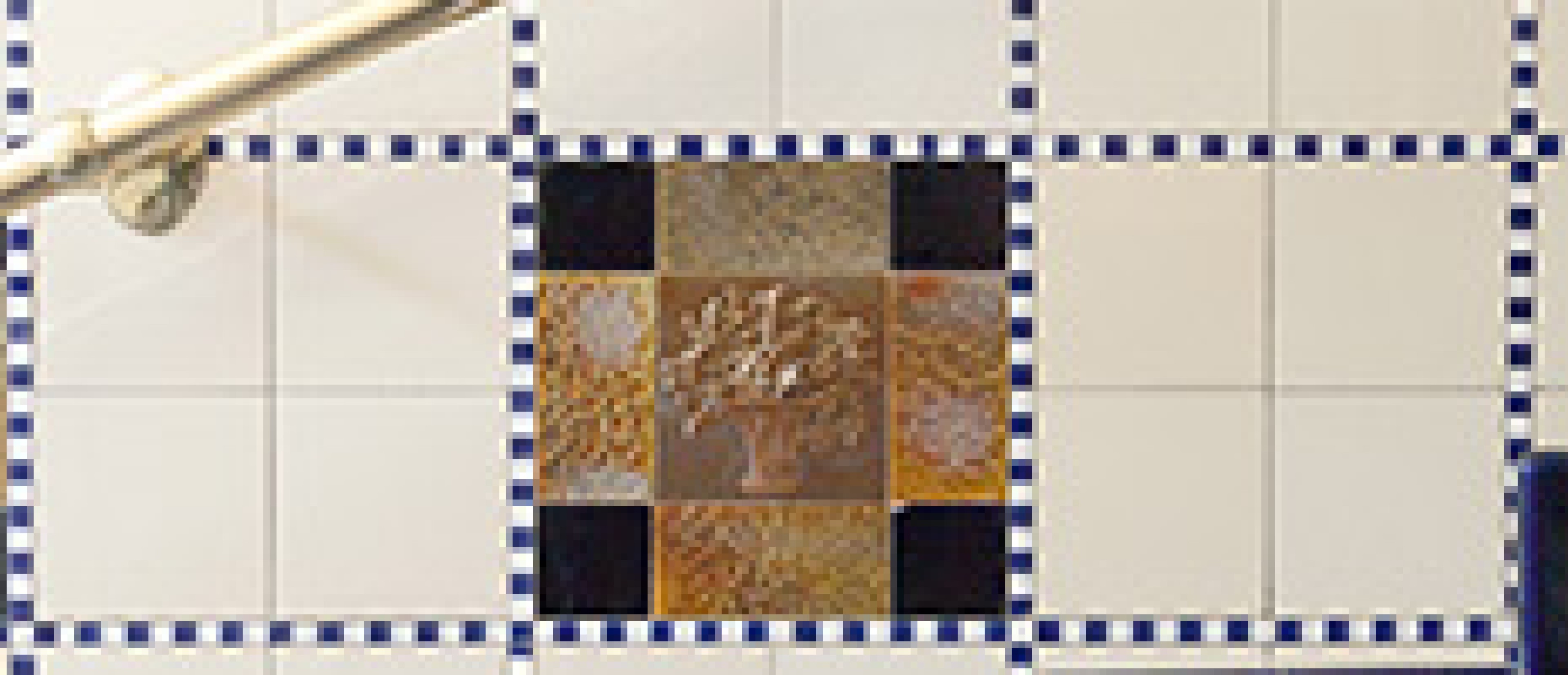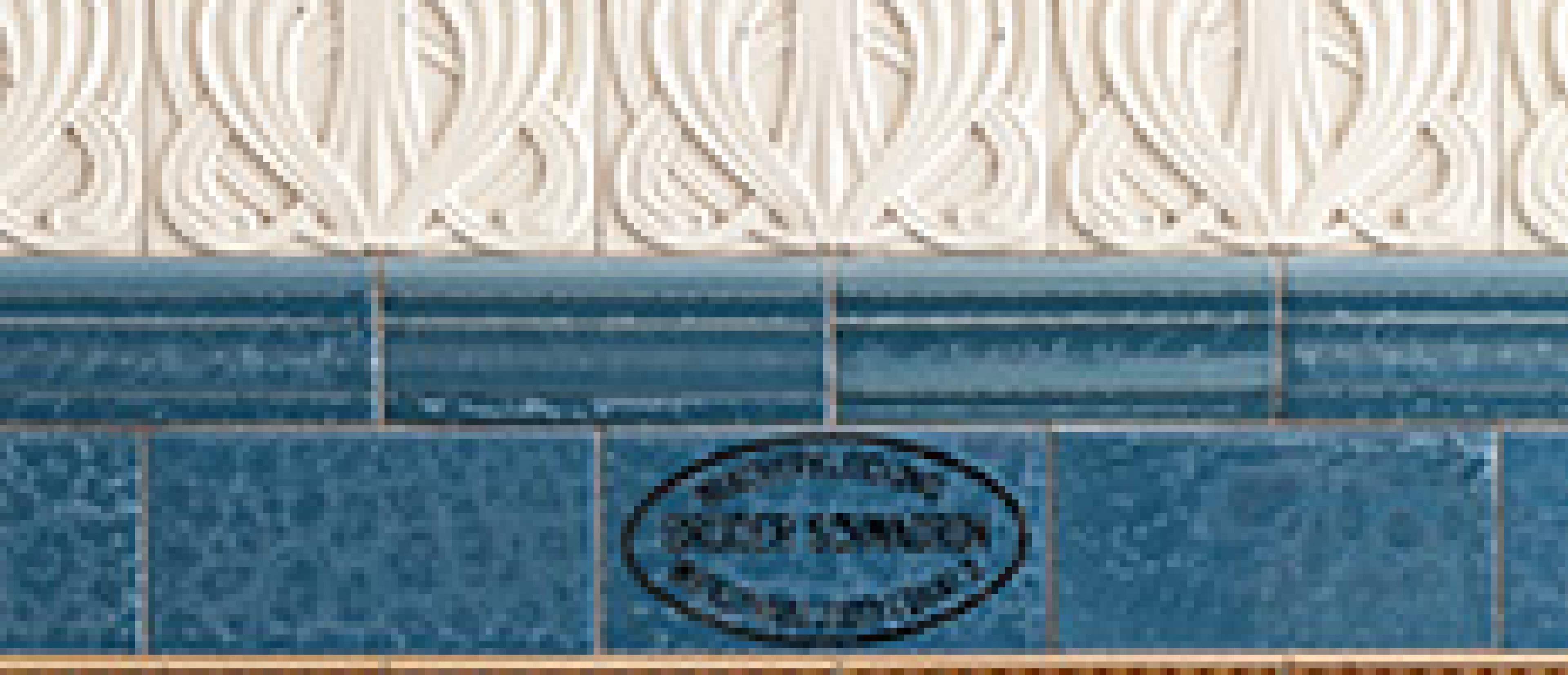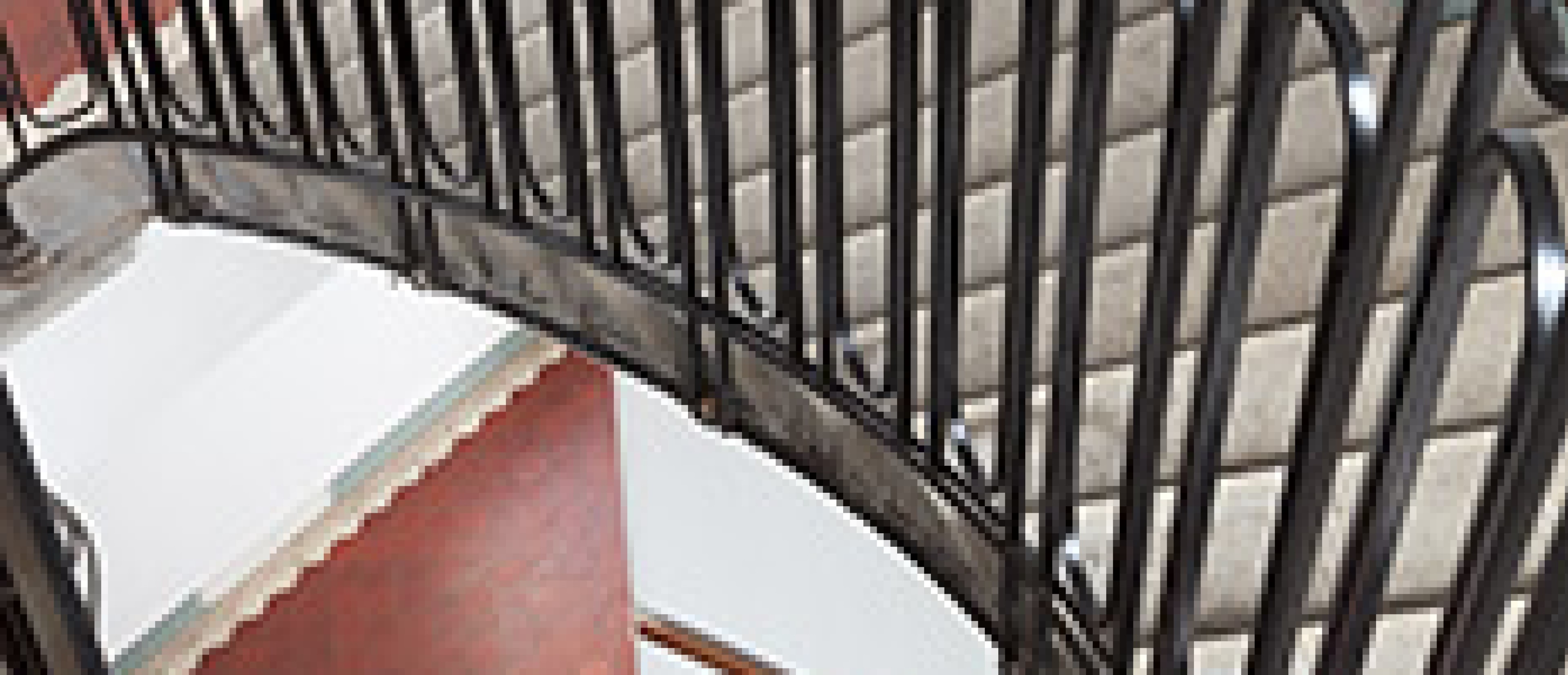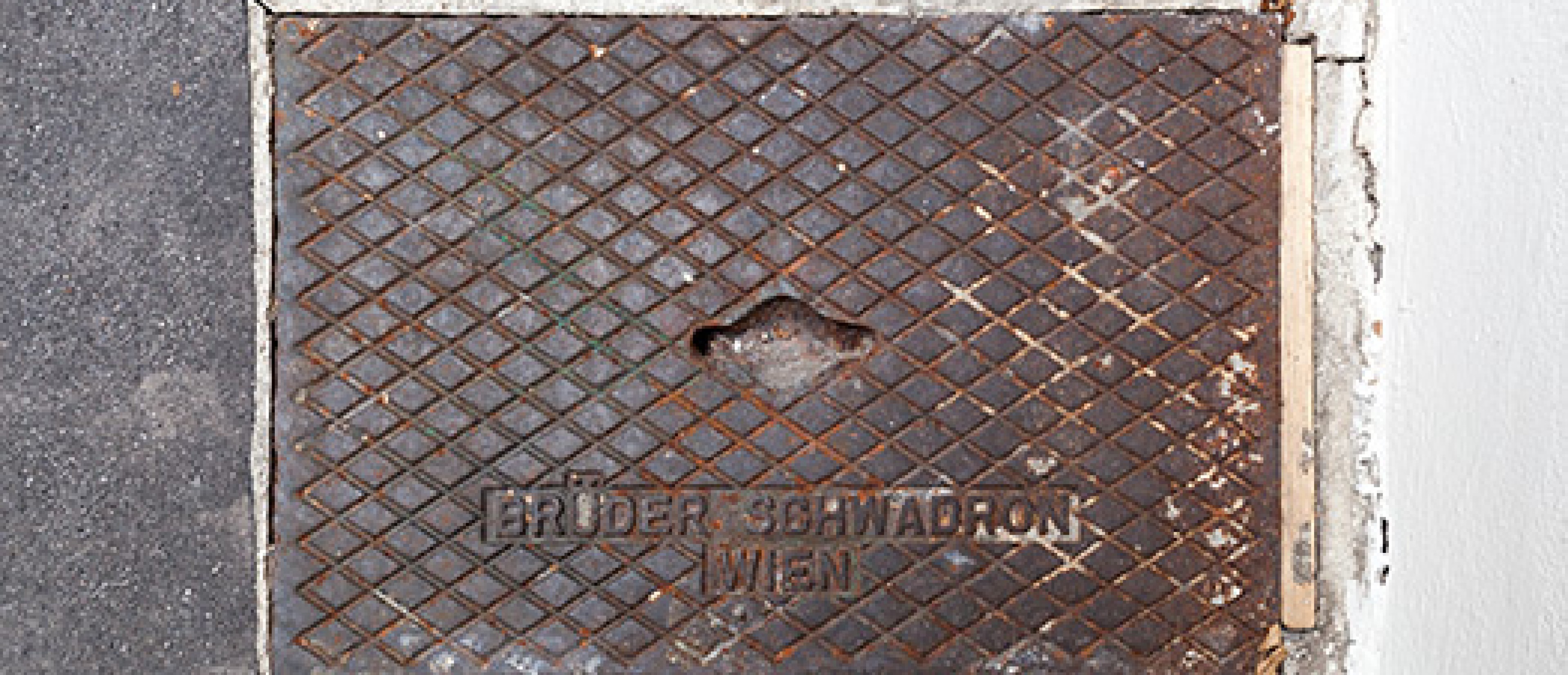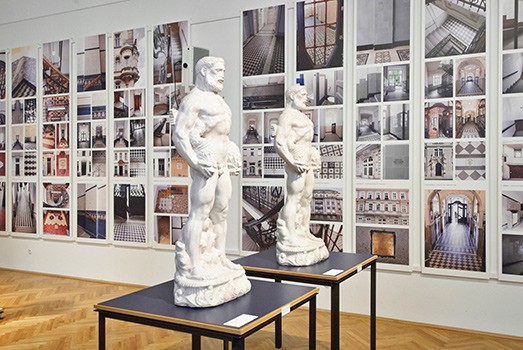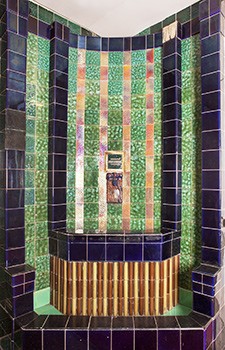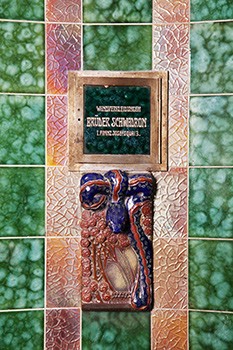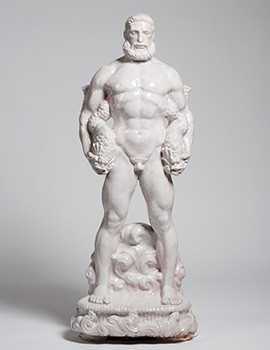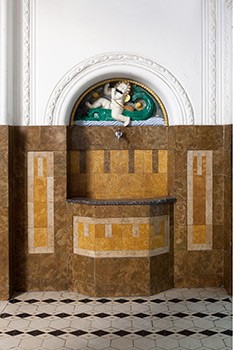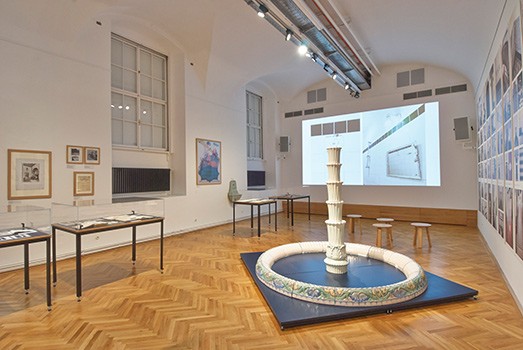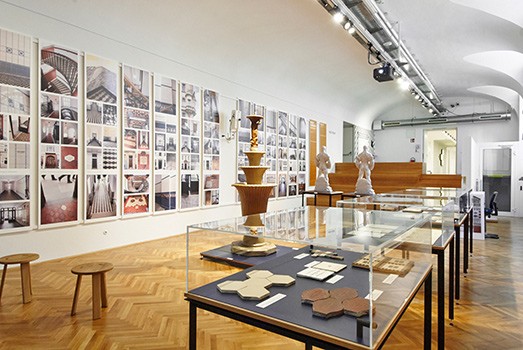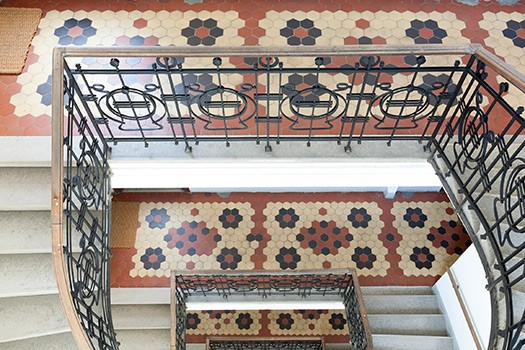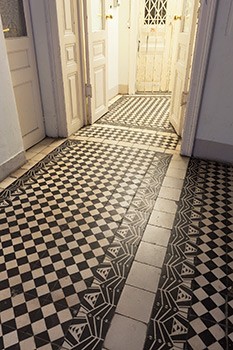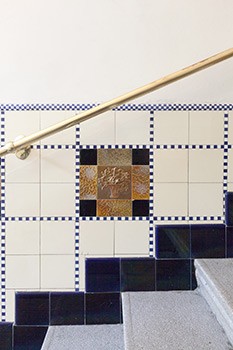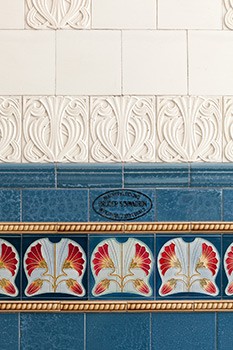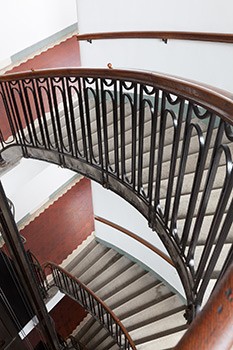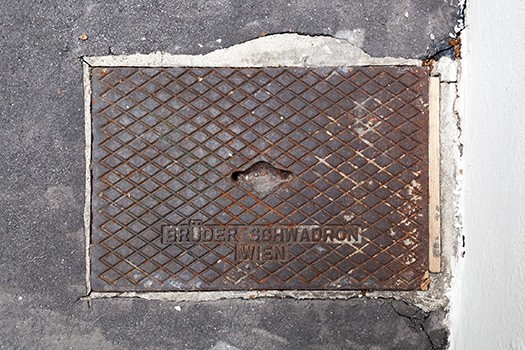Previous Image
5.11.2014—30.11.2014
MAK Forum
Both during and after the first exhibition, BRÜDER SCHWADRON call to mind, which took place from 9 to 29 January 2014 in the former business premises of the architectural ceramics company Brüder Schwadron at Franz-Josefs-Kai 3 in Vienna, the project team was inundated with suggestions as to further locations and traces of the Brüder Schwadron. This second exhibition, BRÜDER SCHWADRON: New Places & Traces, presented in the MAK is dedicated to the tremendous participation and enthusiasm of those “scouts”.
The concept for the exhibition is altogether indebted to the ideas put forward in the context of this participation. The highly diverse locations found by the scouts are on display, illustrating new décors and signature tiles. The scouts had discovered 25 new apartment buildings and villas in Vienna and Baden, which Lisa Rastl then staged masterfully in her photographs. A tiled stove was even tracked down in Tyrol, the door of which bears the name and address of the Brüder Schwadron. Another tiled stove that is branded in the same way can be found in the former parlor of an apartment in Vienna’s 7th district. The diversity of the locations and objects sought out by scouts is epitomized by a fountain, which is situated in the entrance area of the Residenz Zögernitz and which is listed as a protected structure.
Another fountain on display in the exhibition was designed by Otto Prutscher and Michael Powolny and made by Wienerberger. There is evidence to prove that a model of this fountain was crafted in the Brüder Schwadron’s ceramic art workshop. The fountain had served to decorate a garden designed by the landscape architect Albert Esch for the architect Rudolf Perthen.
Two sculptures of Neptune designed by Michael Powolny comprise the highlight of the exhibition. In Vienna’s former Dianabad swimming pool—for which the Brüder Schwadron provided all of the architectural ceramic furnishings—eight of these Neptune sculptures adorned the alcoves around the warm water pool in the men’s Turkish bath.
Furthermore, the exhibition presents both historical and new photographs of locations, which had previously been tiled by the Brüder Schwadron, but which have since been entirely destroyed or which now survive only in part, such as the Krapfenwald pumping station in Döbling, Vienna. A particularly special exhibit is a historical photograph documenting the Brüder Schwadron’s contribution to the 1912 Spring Exhibition of Austrian Arts and Crafts in today’s MAK. The Brüder Schwadron designed the brickwork and the floor covering for the garden room—the remainder of which was designed by Oskar Strnad—in this showcase of arts and crafts.
Donations and loans from scouts are also on display: original tiles and tesserae, a catalog belonging to the Schwadrons regarding the construction of the Dianabad, and a signature tile, which was specifically marked by the “Aryanizers” of the company. Additionally, loans from the Austrian State Archives shine a light on the reprisals that Victor Schwadron had to endure at the hands of the National Socialist leadership.
The aim of this second exhibition, BRÜDER SCHWADRON: New Places & Traces, is to continue the work of remembrance and to preserve the memory of the Brüder Schwadron, who made an unparalleled contribution to the aesthetics of Vienna’s city culture and whose family and company was tragically destroyed by the Nazis.
The catalog accompanying the exhibition contains new photographs by Lisa Rastl, historical images, as well as texts by Rainald Franz, Andreas Lehne, Kathrin Pokorny-Nagel, and Tina Zickler (108 pages, € 20, to be sold in the exhibition)
Idea and concept/curator Tina Zickler
A cooperation of labprojects kulturverein and MAK Vienna.
Sundays at 1 p.m.
Curator guided tours
Fri, 21.11.2014, 4 p.m.
Guided tour through the exhibtion with the curator, Tina Zickler in the course of Vienna Art Week
Sat, 22.11.2014, 4 p.m.
MAK Columned Main Hall
Tex Rubinowitz will read from his book Das staubige Tier – Über und unter Wien, in which he raved about the Brüder Schwadron’s glazed tiles as early as 2007.
projekt-schwadron.at
The concept for the exhibition is altogether indebted to the ideas put forward in the context of this participation. The highly diverse locations found by the scouts are on display, illustrating new décors and signature tiles. The scouts had discovered 25 new apartment buildings and villas in Vienna and Baden, which Lisa Rastl then staged masterfully in her photographs. A tiled stove was even tracked down in Tyrol, the door of which bears the name and address of the Brüder Schwadron. Another tiled stove that is branded in the same way can be found in the former parlor of an apartment in Vienna’s 7th district. The diversity of the locations and objects sought out by scouts is epitomized by a fountain, which is situated in the entrance area of the Residenz Zögernitz and which is listed as a protected structure.
Another fountain on display in the exhibition was designed by Otto Prutscher and Michael Powolny and made by Wienerberger. There is evidence to prove that a model of this fountain was crafted in the Brüder Schwadron’s ceramic art workshop. The fountain had served to decorate a garden designed by the landscape architect Albert Esch for the architect Rudolf Perthen.
Two sculptures of Neptune designed by Michael Powolny comprise the highlight of the exhibition. In Vienna’s former Dianabad swimming pool—for which the Brüder Schwadron provided all of the architectural ceramic furnishings—eight of these Neptune sculptures adorned the alcoves around the warm water pool in the men’s Turkish bath.
Furthermore, the exhibition presents both historical and new photographs of locations, which had previously been tiled by the Brüder Schwadron, but which have since been entirely destroyed or which now survive only in part, such as the Krapfenwald pumping station in Döbling, Vienna. A particularly special exhibit is a historical photograph documenting the Brüder Schwadron’s contribution to the 1912 Spring Exhibition of Austrian Arts and Crafts in today’s MAK. The Brüder Schwadron designed the brickwork and the floor covering for the garden room—the remainder of which was designed by Oskar Strnad—in this showcase of arts and crafts.
Donations and loans from scouts are also on display: original tiles and tesserae, a catalog belonging to the Schwadrons regarding the construction of the Dianabad, and a signature tile, which was specifically marked by the “Aryanizers” of the company. Additionally, loans from the Austrian State Archives shine a light on the reprisals that Victor Schwadron had to endure at the hands of the National Socialist leadership.
The aim of this second exhibition, BRÜDER SCHWADRON: New Places & Traces, is to continue the work of remembrance and to preserve the memory of the Brüder Schwadron, who made an unparalleled contribution to the aesthetics of Vienna’s city culture and whose family and company was tragically destroyed by the Nazis.
The catalog accompanying the exhibition contains new photographs by Lisa Rastl, historical images, as well as texts by Rainald Franz, Andreas Lehne, Kathrin Pokorny-Nagel, and Tina Zickler (108 pages, € 20, to be sold in the exhibition)
Idea and concept/curator Tina Zickler
A cooperation of labprojects kulturverein and MAK Vienna.
Guided tours
Guided toursSundays at 1 p.m.
Curator guided tours
Fri, 21.11.2014, 4 p.m.
Guided tour through the exhibtion with the curator, Tina Zickler in the course of Vienna Art Week
Reading with Tex Rubinowitz
(in German)Sat, 22.11.2014, 4 p.m.
MAK Columned Main Hall
Tex Rubinowitz will read from his book Das staubige Tier – Über und unter Wien, in which he raved about the Brüder Schwadron’s glazed tiles as early as 2007.
projekt-schwadron.at
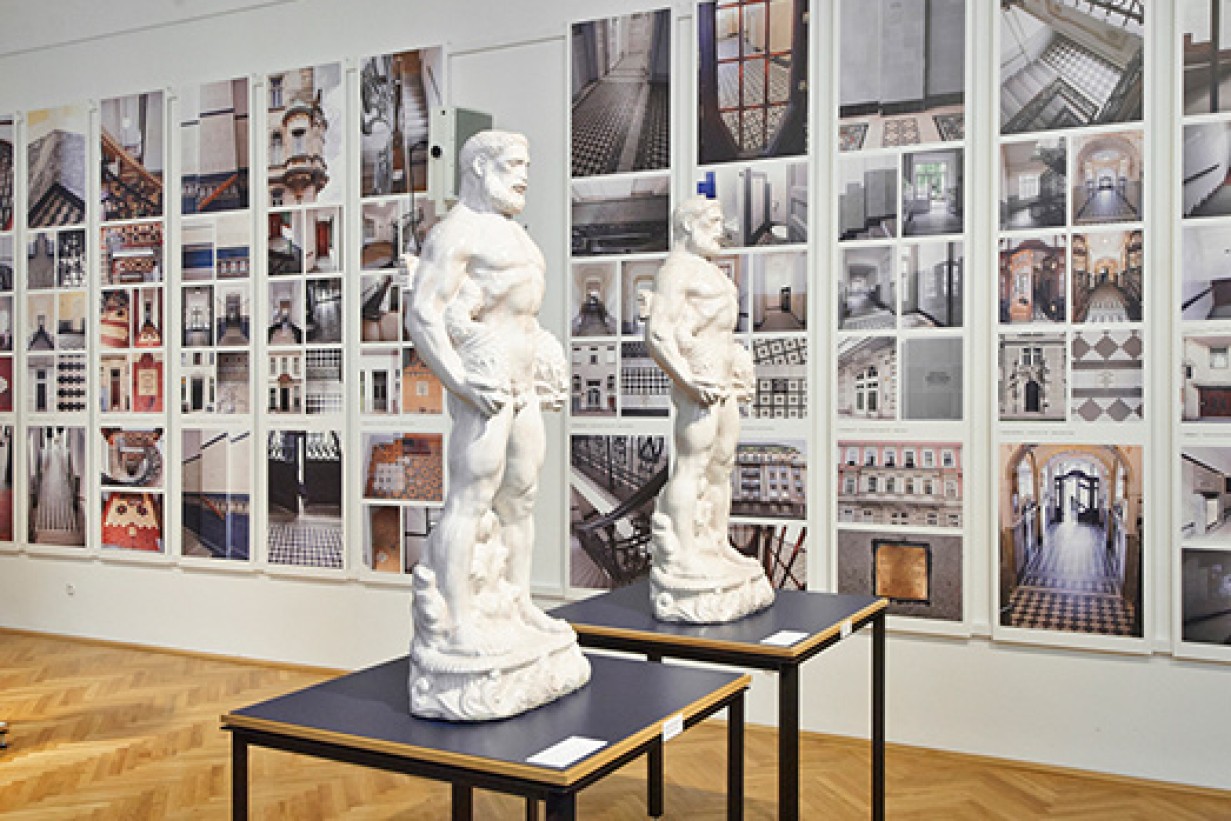
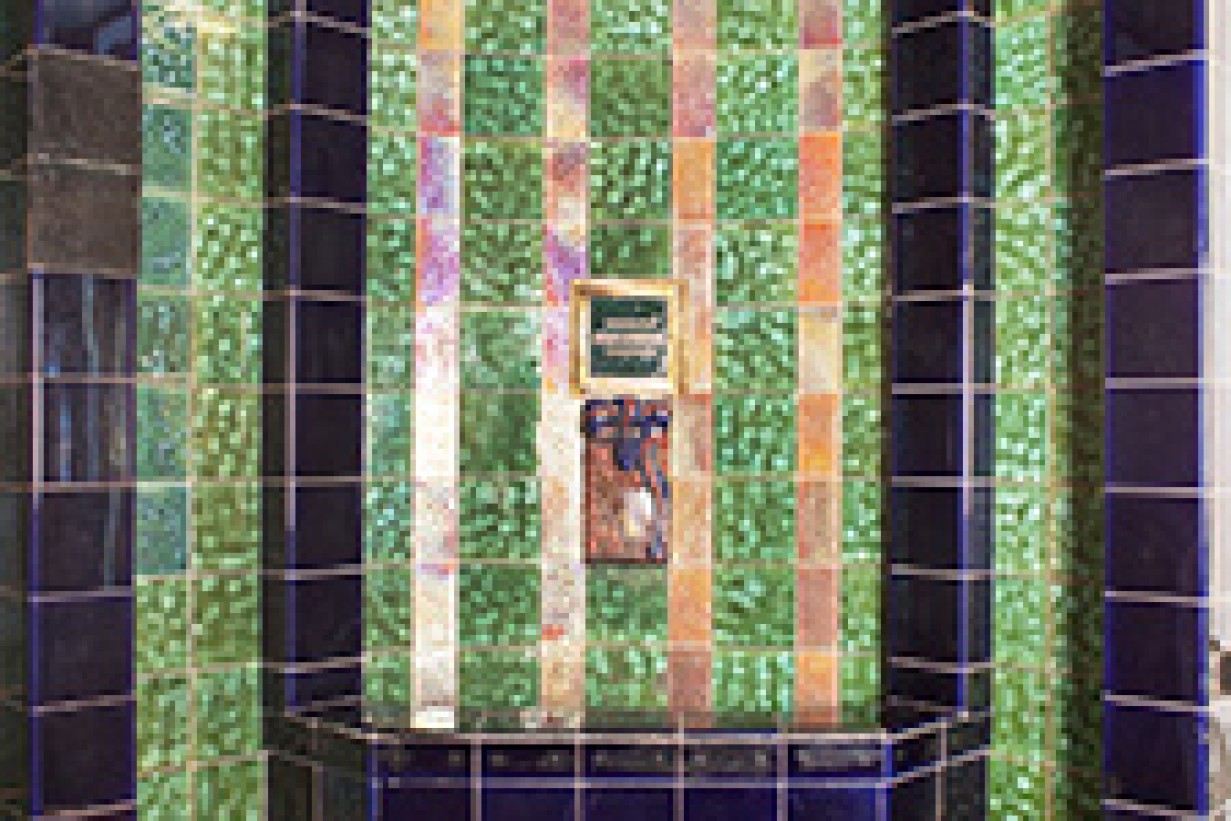
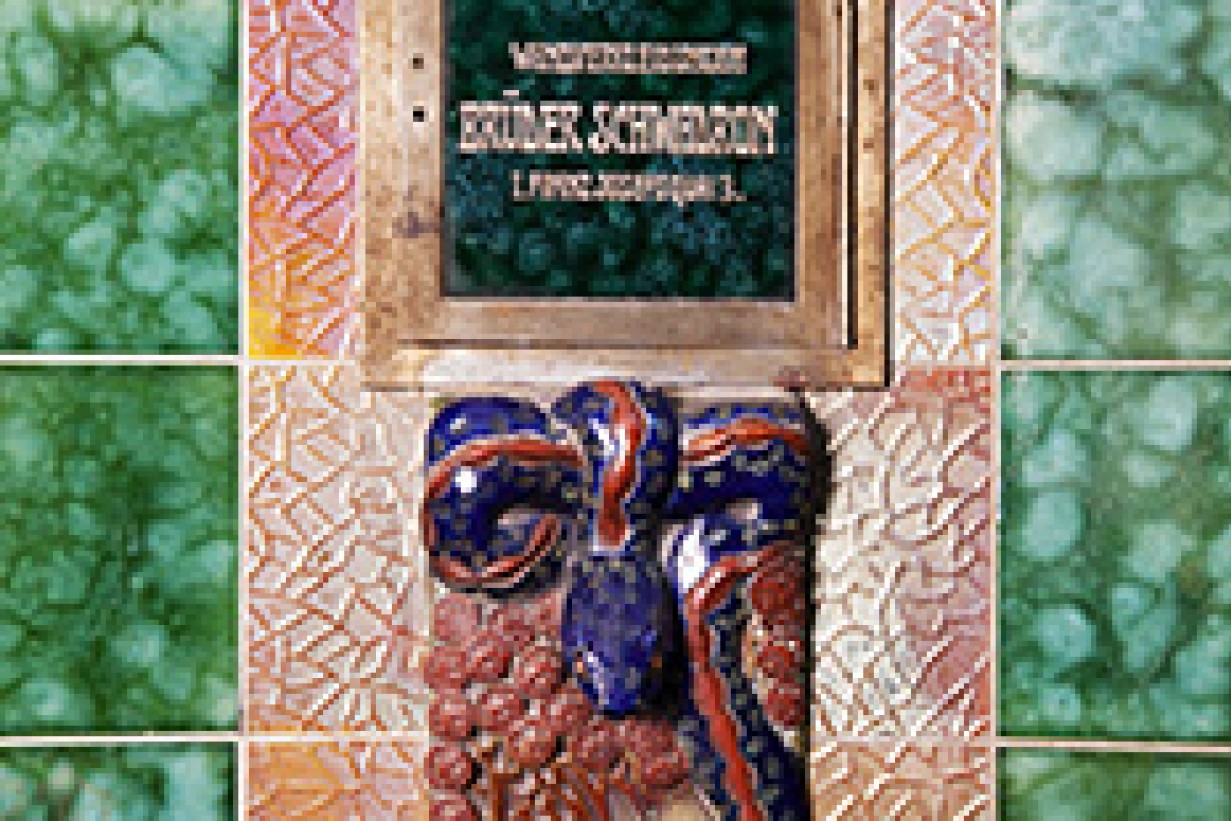
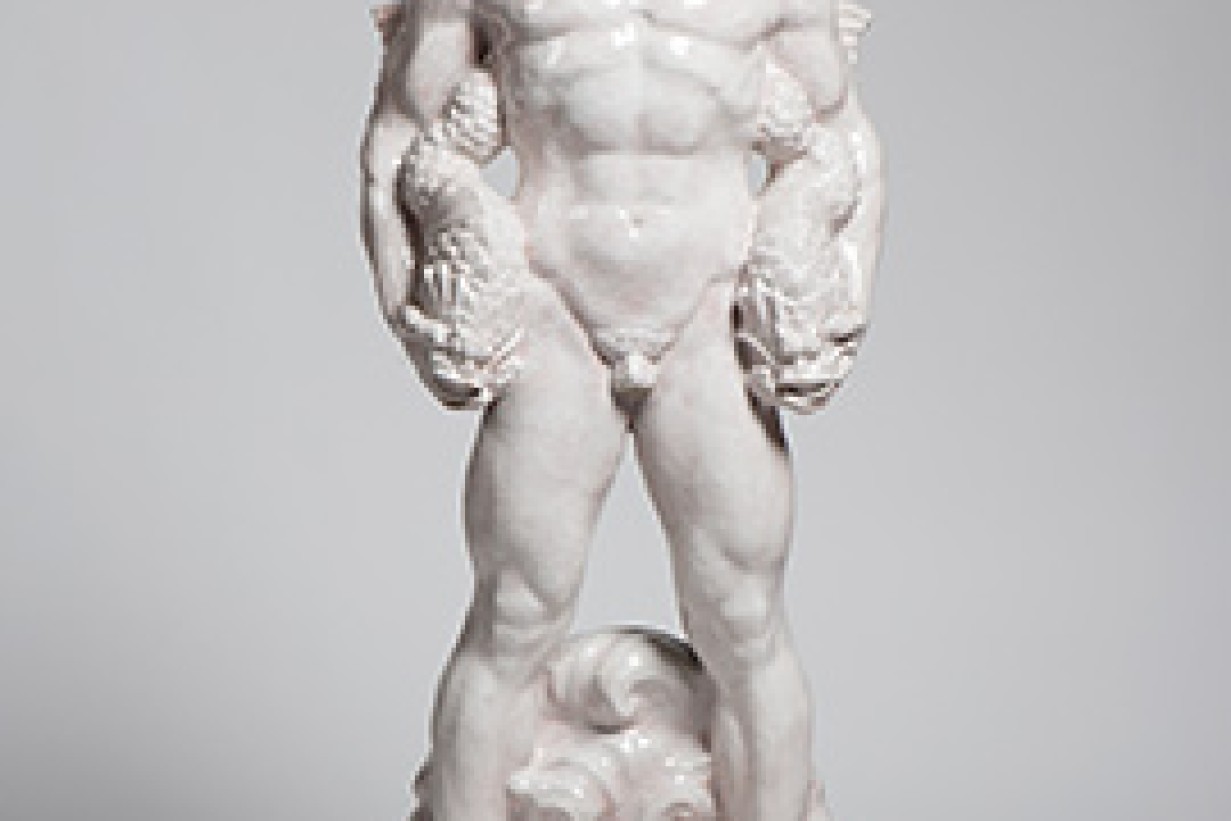
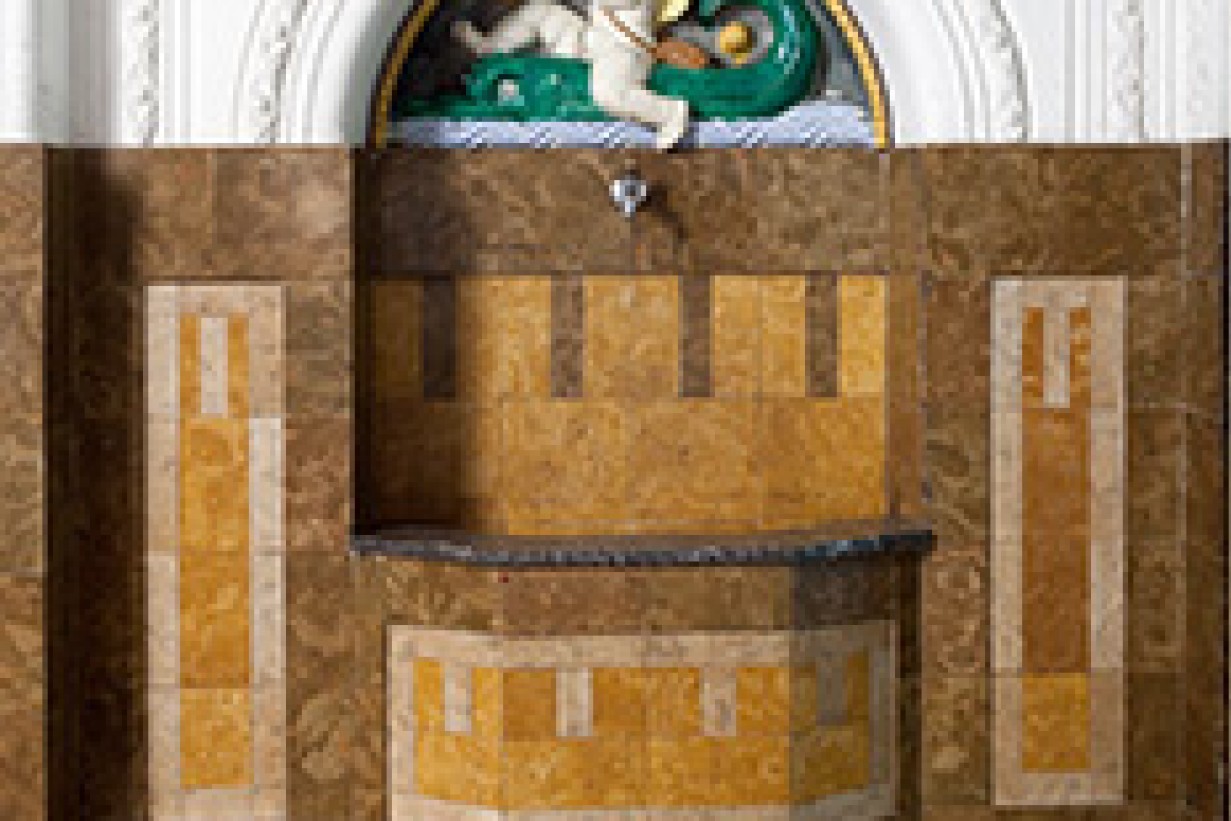
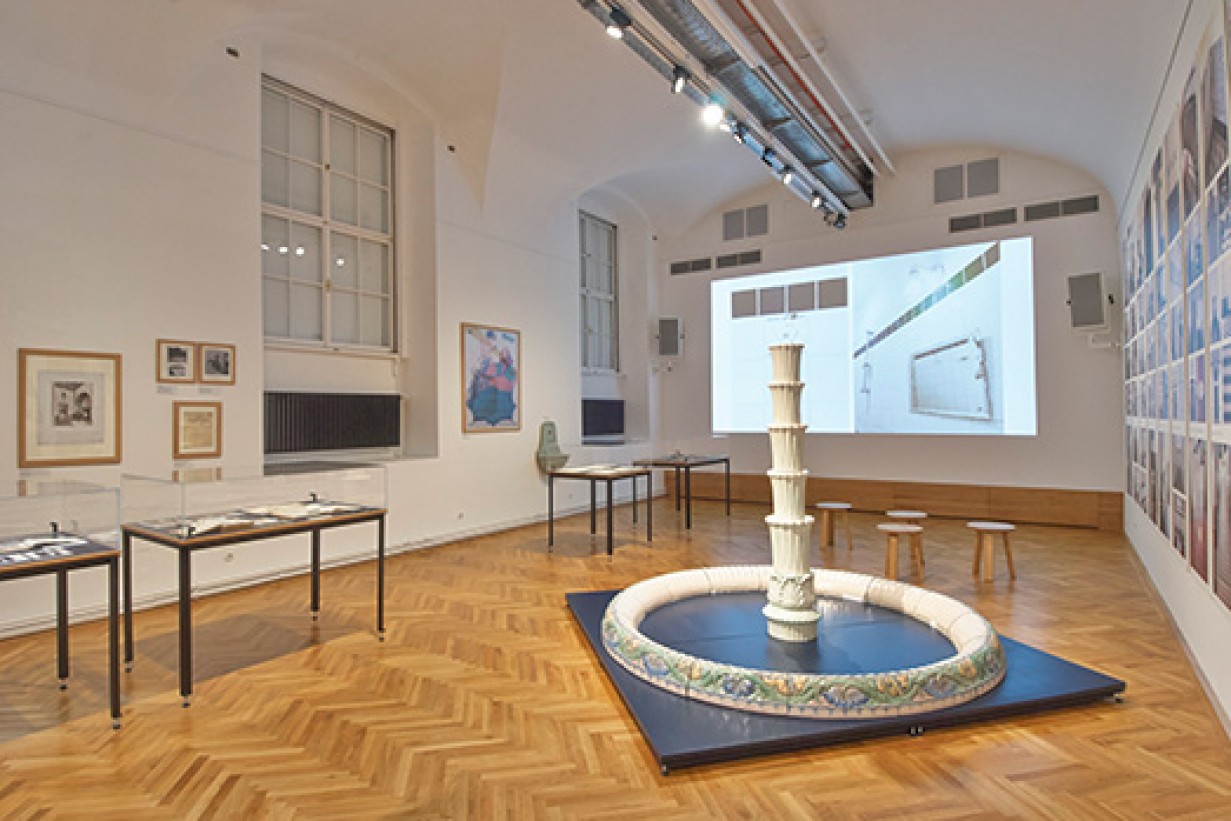

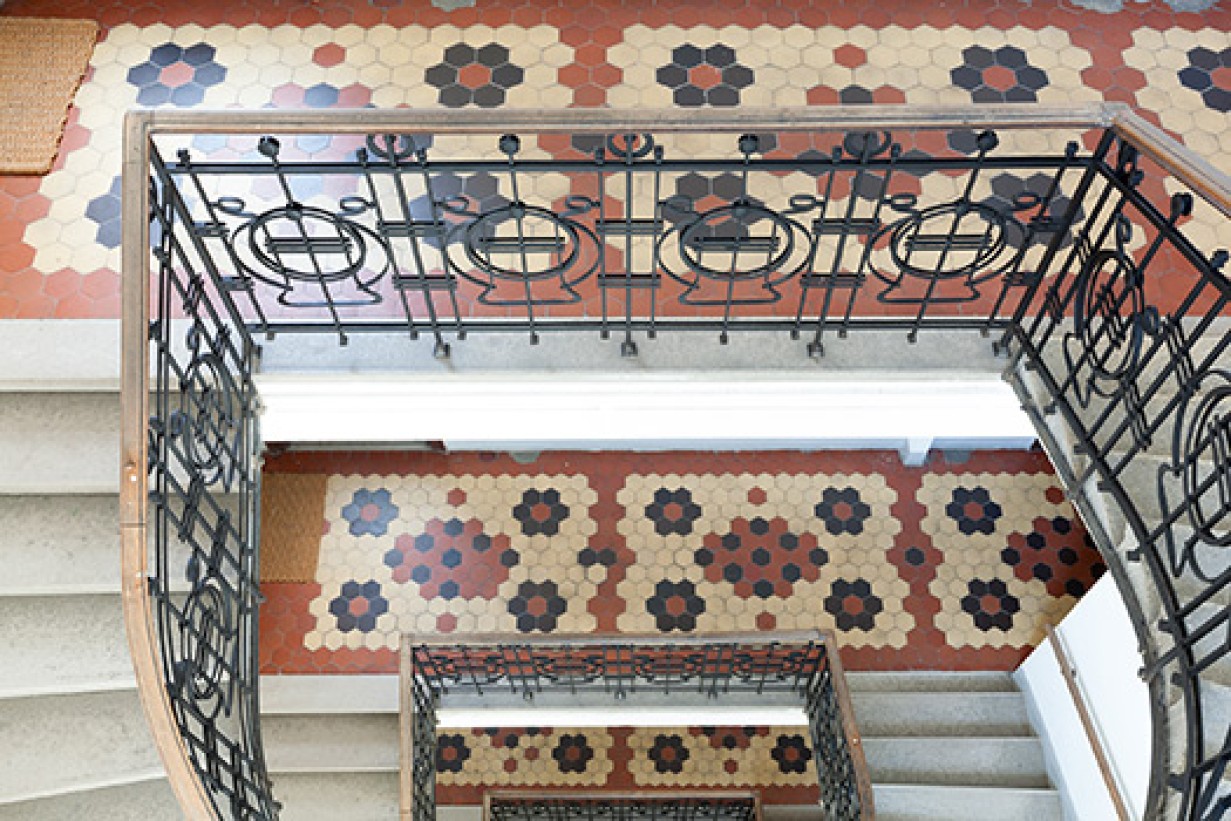
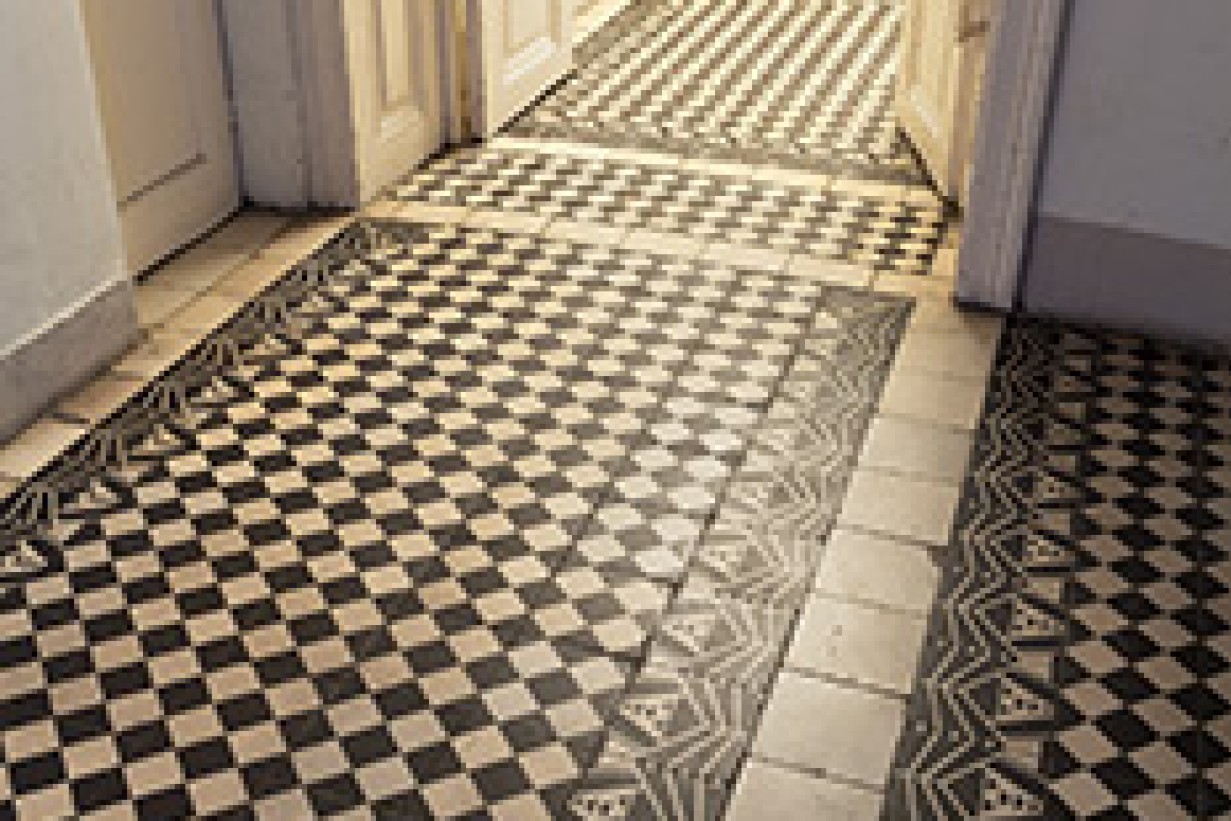
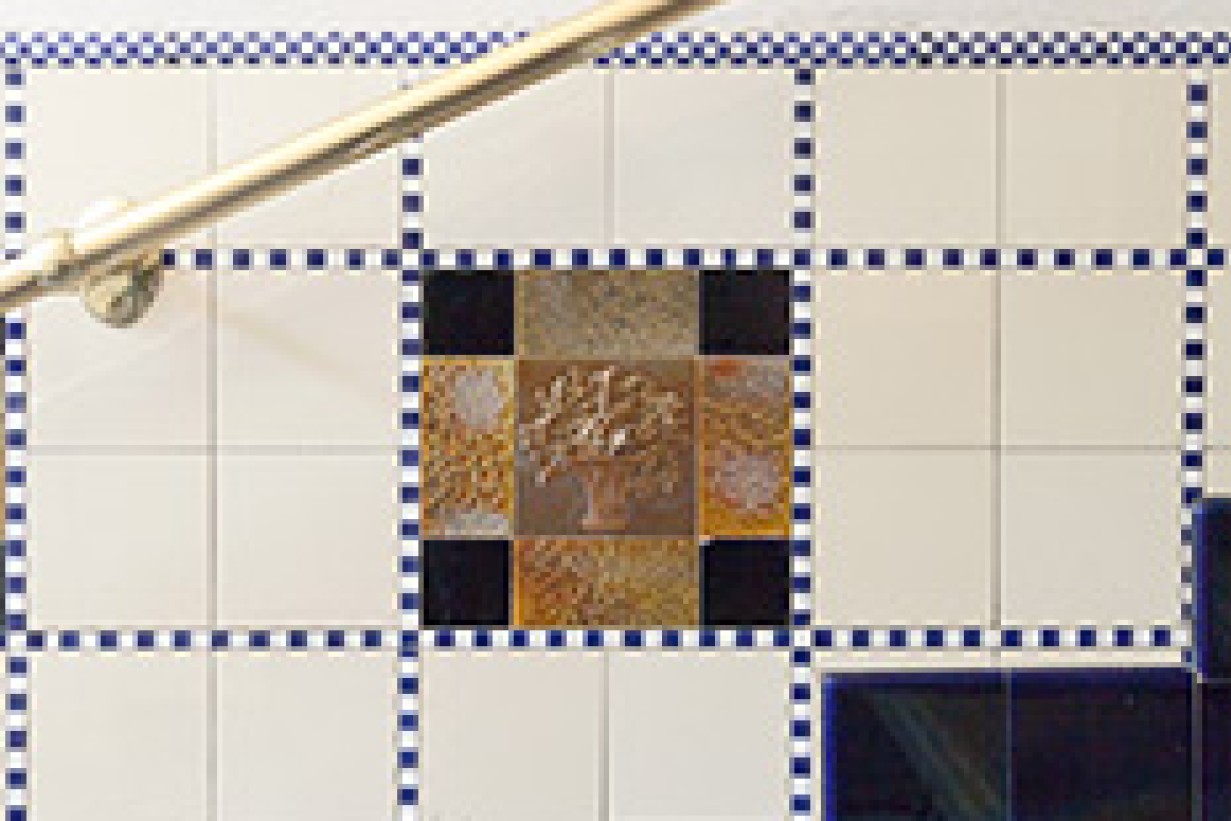
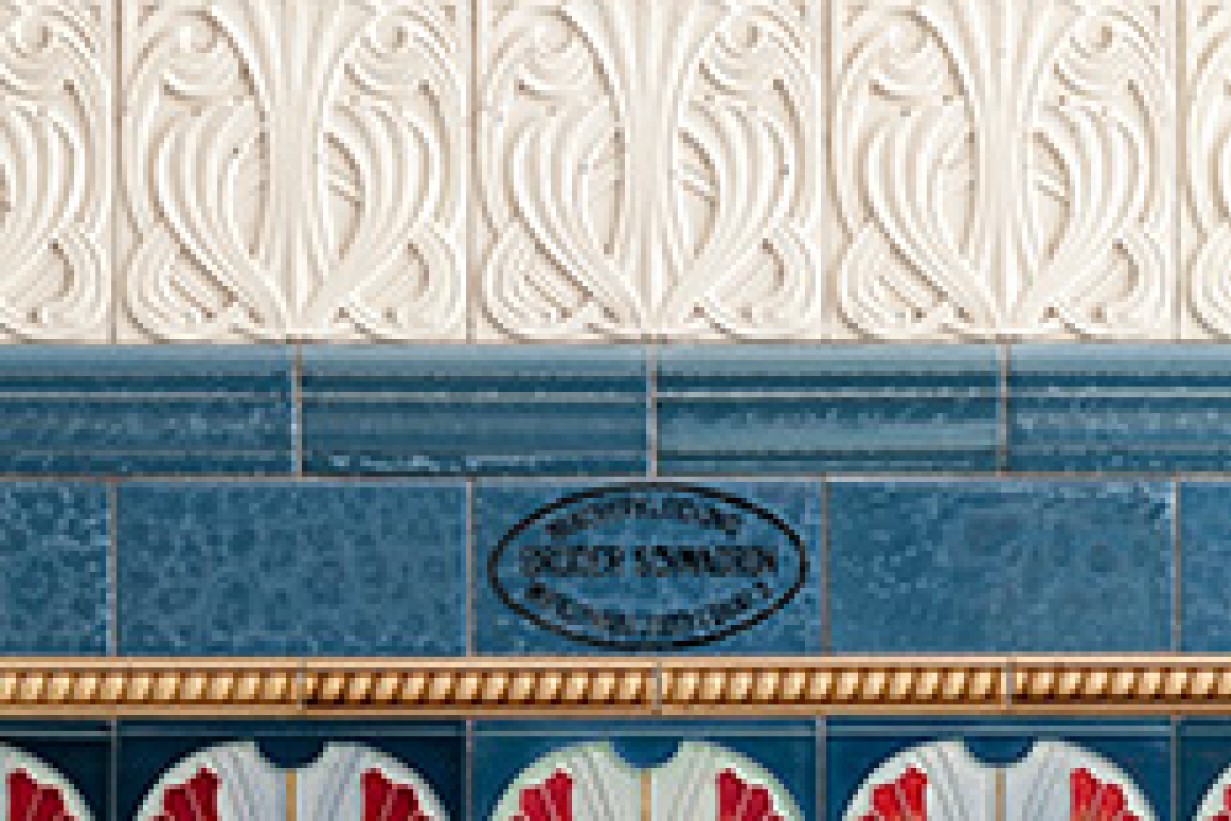
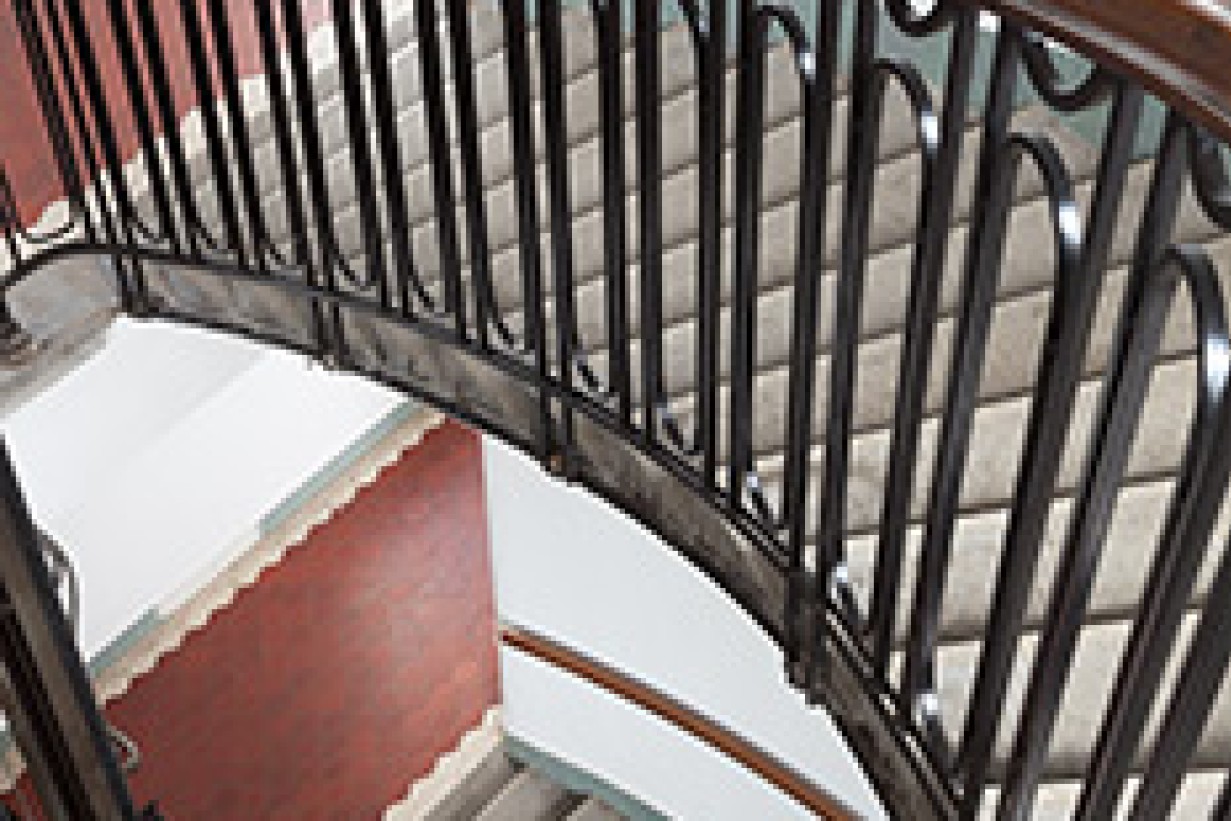

Previous Image
